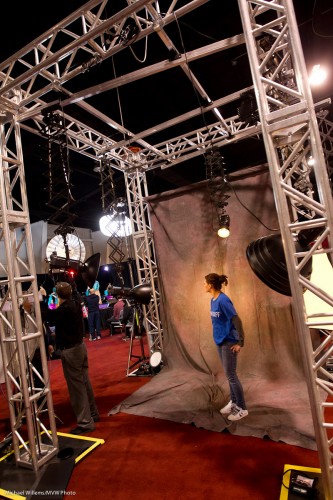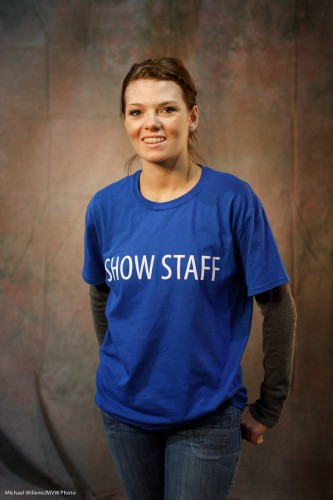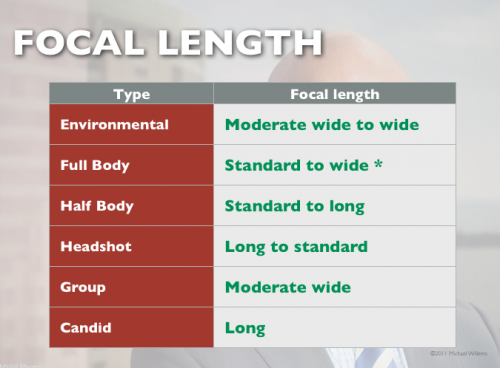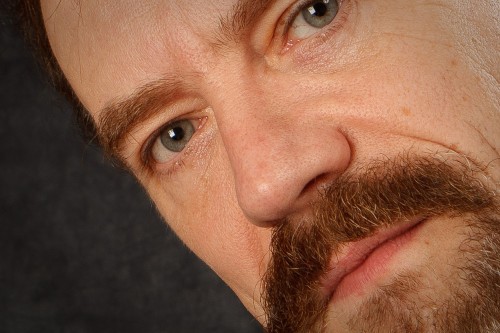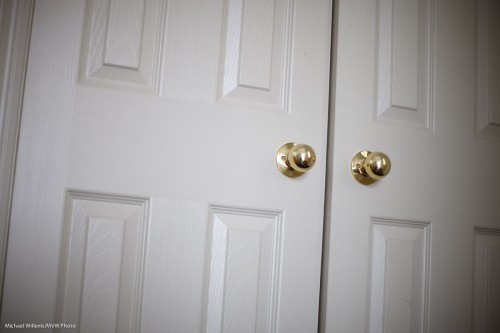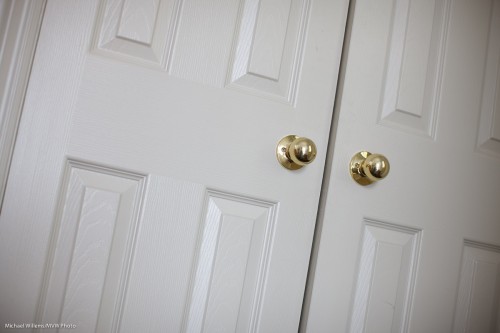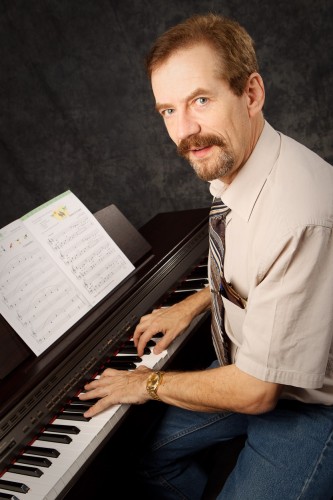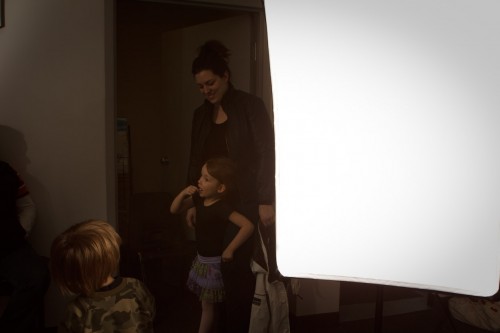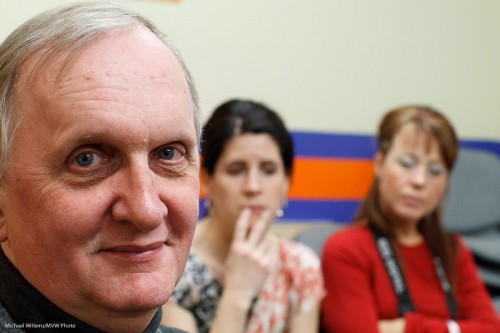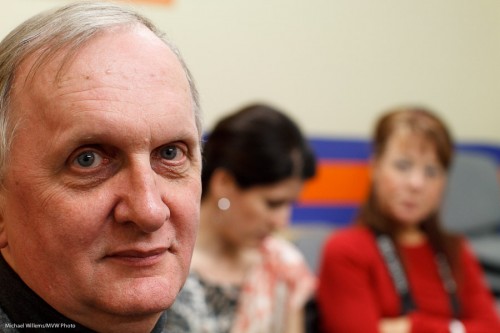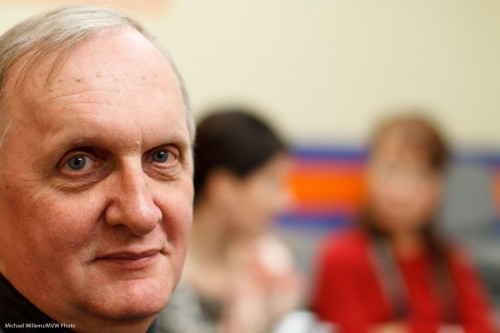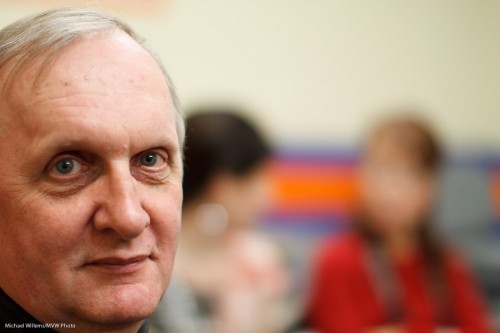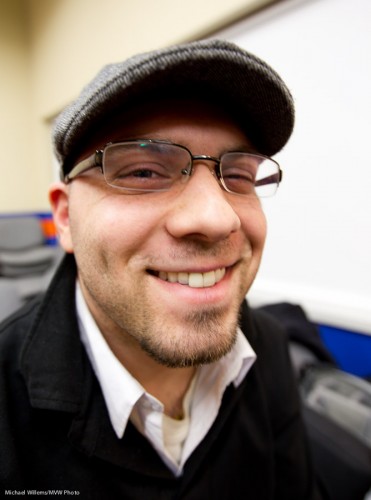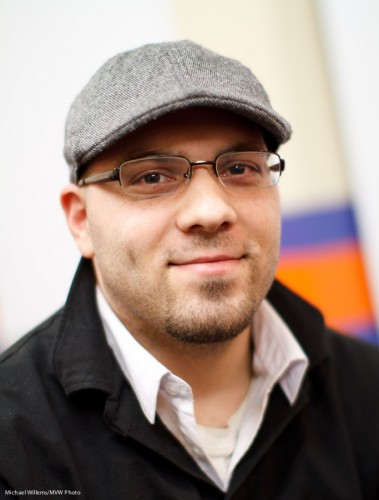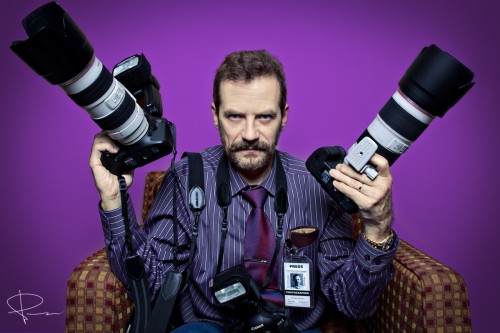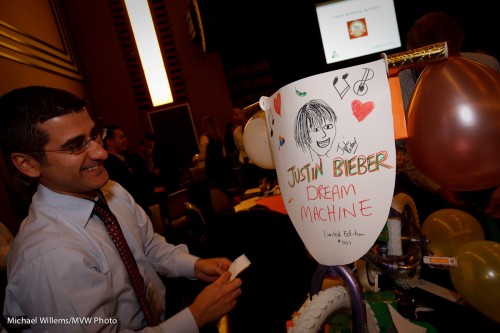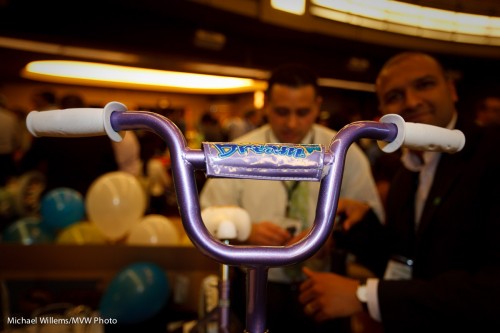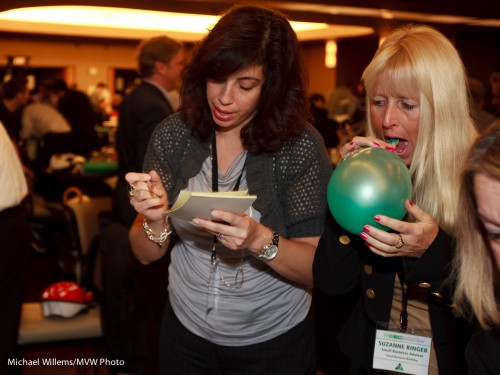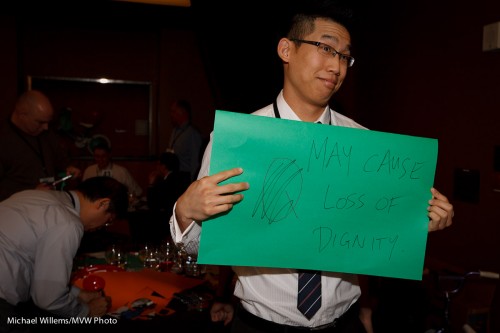Fast lenses, and why do you need them for portraits?
“Fast” lenses mean lenses with a large aperture, i.e. a low minimum “f-number”. Like an f/2.8 lens, or even an f/1.4 lens. These lenses allow shallower depth of field, but they also allow in more light.
Imaging shooting in a studio. Like this, at today’s Imaging Show, at which I spoke about lenses again:
All sorts of lights, operated by Pocketwizards. Yes, true, you do not need a fast lens for this. A simple f/5.6 lens will do since you will shoot at f/5.6 – f/8. (Though a fast lens stopped down will be sharper than a slow lens wide open).
But. Imagine you want to shoot there using available light. Not the flashes, but the available modeling lights. Or perhaps window light in your room.
This you can do only if you have a fast lens. Set it to f/1.4 and it lets in so much light that in that situation above you can shoot at 1/100th second at 100 ISO (or if you wish, 1/400th second at 400 ISO):
Isn’t that amazing? handheld, Canon 7D, prime 35mm f/1.4 lens, set to f/1.4 at 400 ISO and 1/400th second. And it looks like a studio shot. Due to my use of a fast lens.
(Oh – why did I shoot as I was, at f/1.4 and 400 ISO? Because I was carrying a heavy bag with speedlights and lesens, and two cameras, and a laptop. So I had no spare hand. That’s why!)

